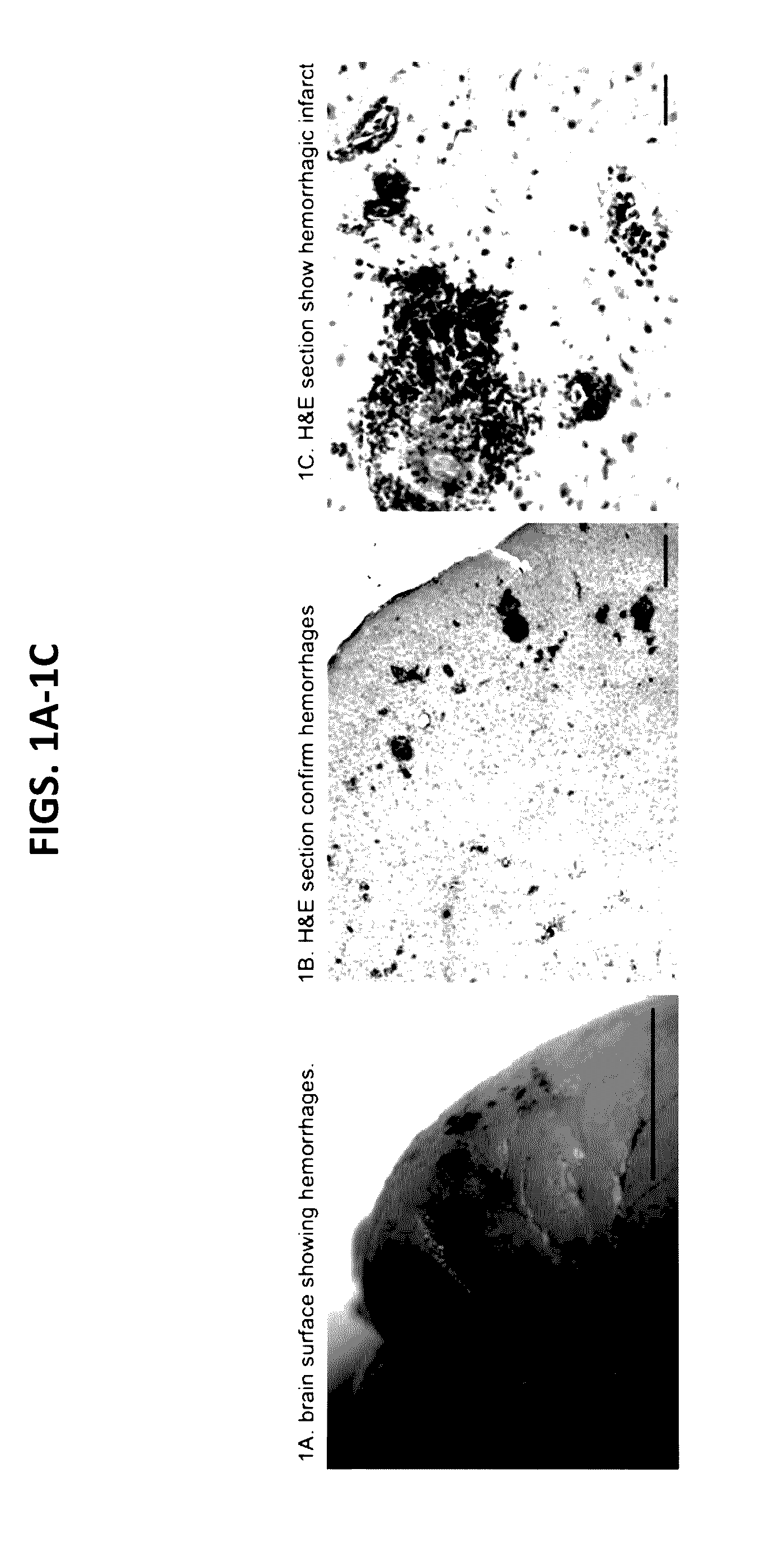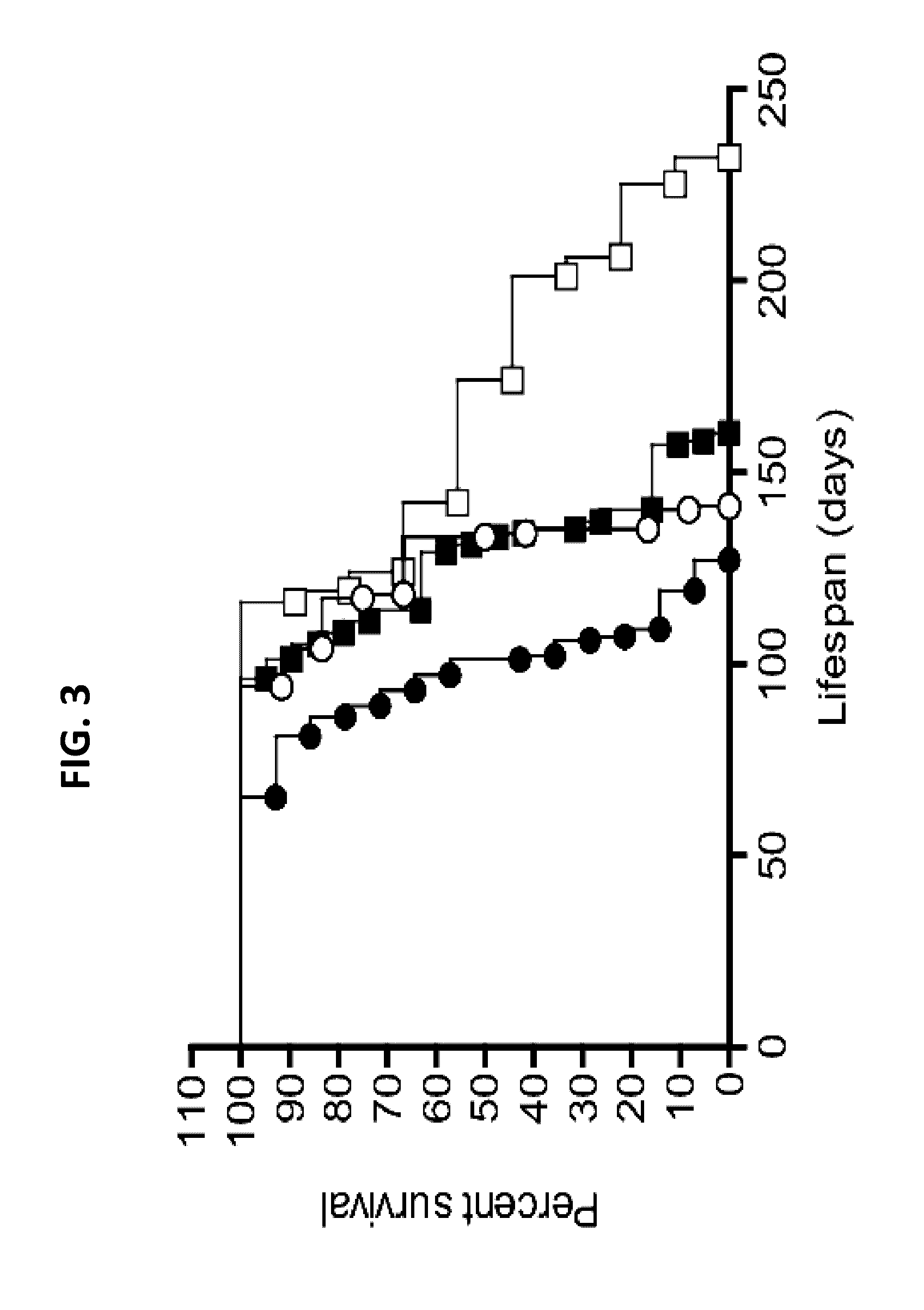ANTI-DEspR MONOCLONAL ANTIBODY TARGETED THERAPY AND IMAGING FOR CANCER AND STROKE
a monoclonal antibody and cancer technology, applied in the field of monoclonal antibodies against, can solve the problems of poor therapy delivery, death, and ineffective therapy to stop therapy-resistant tumor recurrence or reseeding, and achieve the effect of promoting cancer autophagy
- Summary
- Abstract
- Description
- Claims
- Application Information
AI Technical Summary
Benefits of technology
Problems solved by technology
Method used
Image
Examples
example 1
[0659]Peptide GSNEMKSRWNWGS (SEQ ID NO: 1) was used as antigenic peptide to generate monoclonal antibodies directed to DEspR. A smaller or partial peptide EMKSRWNWGS (SEQ ID NO: 2) was then used to screen (by ELISA) for monoclonal antibodies and narrow down the potential epitope for 6G8G7.
[0660]The stroke prone Tg25+ rat model was developed in the polygenic Dahl Salt-sensitive hypertensive strain, transgenic for human cholesteryl ester transfer protein conveying a hyperlipidemic profile (Herrera et al. 1999). These rats were made stroke prone by early life Na-exposure during gestation to PURINA 5001 regular rat chow with 0.3% NaCl (Decano et al. 2009). Anatomical and histological analysis revealed that Tg25+ stroke prone rats exhibited parenchymal hemorrhages (FIGS. 1A-1B) and hemorrhagic infarctions (FIG. 1C).
[0661]The rat stroke model exhibits stroke-pathology lesions seen in humans. These lesions were detectable on ex vivo 11.7T MR-imaging using gradient echo sequences (FIG. 2A) ...
example 2
[0687]As described herein, variable heavy (VH) and variable light (VL) chains sequences were obtained from the hybridoma 6g8g7 both at the DNA level by PCR and by Mass Spectrometry sequencing from 2 independent CROs. It was found that there were two variable heavy (VH) and three variable light (VL) chains sequences.
[0688]Humanized chimeric sequences were made of the 6g8g7 murine monoclonal antibody CDR sequences with human IgG1 / kappa Fc region.
[0689]Several 6g8g7-derived human monoclonal antibody candidates were next designed with the following specifications:
[0690]a) CDR sequences from 6G8G7 HV2 (SEQ ID NOs: 14, 15, and 16) and 6G8G7 KV1 (SEQ ID NOs: 28, 29, and 30) that retain 6G8G7 binding to rat and human DEspR.
[0691]b) Sequence modifications in variable regions were made to exclude or reduce the following sites for optimal biotherapeutic properties for efficacy, safety and manufacture: 1) potential CD4+ T-cell epitopes for low immunogenicity; 2) acid-labile sites for antibody s...
PUM
| Property | Measurement | Unit |
|---|---|---|
| KA | aaaaa | aaaaa |
| size | aaaaa | aaaaa |
| therapy resistance | aaaaa | aaaaa |
Abstract
Description
Claims
Application Information
 Login to View More
Login to View More - R&D
- Intellectual Property
- Life Sciences
- Materials
- Tech Scout
- Unparalleled Data Quality
- Higher Quality Content
- 60% Fewer Hallucinations
Browse by: Latest US Patents, China's latest patents, Technical Efficacy Thesaurus, Application Domain, Technology Topic, Popular Technical Reports.
© 2025 PatSnap. All rights reserved.Legal|Privacy policy|Modern Slavery Act Transparency Statement|Sitemap|About US| Contact US: help@patsnap.com



